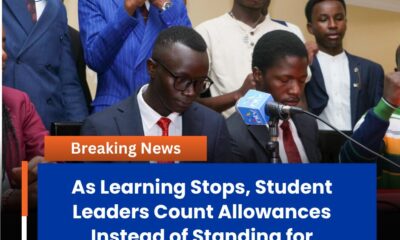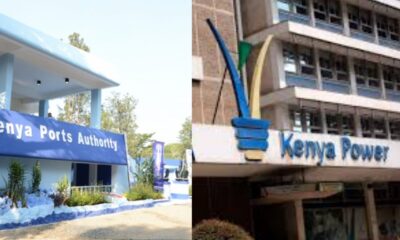The anger Uhuru Kenyatta displayed while dismissing claims he has ignored Mount Kenya in his development agenda speaks volumes about the voter rebellion engulfing the region that has produced three of the four presidents who have ruled Kenya since independence.
Across towns and villages in Mount Kenya region, there is a growing feeling that having the presidency translates to nothing in terms of development.
Founding president Mzee Jomo Kenyatta, Kenya’s third and fourth presidents Mwai Kibaki and Uhuru Kenyatta, all hail from Mount Kenya, but apparently there is little the region can boast of in terms of development.
The only common denominator is that the families of the three presidents are the richest in Kenya, plus the elite hanging on their coattails, while majority of the residents wallow in painful abject poverty.
Indeed, Uhuru’s Gatundu South is the only region in Central Kenya where one will find grass-thatched mud houses, with many young men spending their days in illegal traditional brew joints.
There is talk in the region that having the presidency is like a curse, as other communities are made to believe the Kikuyus get free things while in reality they suffer more than other Kenyans.
Uhuru recently scoffed at those accusing him of doing little for his home turf, saying those who “think development should go to the people where a leader comes from” should be ashamed of themselves.
He termed such people ‘washenzi’ (infidels) in his address during the launch of the Sh460 million Mama Ngina waterfront project in Mombasa.
He pointed out that he does not easily bow to threats and went on to rap leaders who want citizens of particular areas to benefit simply because those in powerful positions are from those regions.
“Hao washenzi waniwache (Those infidels should leave me alone). We have said development will not be done because a leader is from a certain region. We want all the 40 million Kenyans to benefit from development,” he noted.
His remarks came after Gatundu South MP Moses Kuria claimed the Jubilee administration had neglected the Mt Kenya region in matters development.
Kuria said the people of Mt Kenya must be told the truth ahead of the 2022 election so they can pick the right leaders.
But despite the president’s caution, there is a growing feeling in Mount Kenya region that having the presidency is not a ticket for development.
Fears abound that presidential aspirants courting Mount Kenya region to vote for them as a bloc, will be in for a surprise in 2022, as the voter turnout might hit the lowest level.
Those courting Mount Kenya voters are banking on the notion that an election in Kenya is nothing more than an ethnic census, and whoever marshals the largest number of ethnically-ascribable votes wins even before a single ballot is cast.
In the 1992 election that brought in multiparty politics, the country’s overall voter turnout was 58.8pc. It rose to 65.5pc in 1997, when the opposition was even more fragmented than it was in 1992.
The election that saw the defeat of Kanu in 2002 had the lowest turnout in Kenya’s multiparty history, at 57.2pc. It is as if Kenyans were so battered by the Kanu regime that they were even afraid to hope.
But all that changed in 2007, where the highly polarised poll — which would later disintegrate into violence — had even higher turnout than the one that dislodged Kanu, at 69.1pc.
And in 2013, the threat of the International Criminal Court over Uhuru Kenyatta and his running mate William Ruto whipped up the country’s political mood — both for and against — so much that voter turnout was a record 85.9pc.
In the past four general elections – 2007, 2013, 2017 and repeat presidential election – Central Kenya voters have turned up to vote in large numbers, with the sole aim of retaining the presidency, as the holders, Mwai Kibaki and Uhuru Kenyatta respectively came from the region and faced a hostile candidate, Raila Odinga.
The perception that Raila would dismantle Kikuyu business interests across the country saw the community record the highest turnout in the elections.
Consider this: 32 constituencies that recorded a turnout of 80 per cent or more in the last elections were all from Central region, apart from Bahati and Subukia in Nakuru county which had voter turnouts of 82pc and 81pc, but equally are dominated by the members of the Kikuyu community.
In the last polls, Gatundu North, which neighbours Gatundu South, which the president represented in parliament before becoming president, and Kigumo constituencies, had the highest turnout of 87pc.
They were followed by Githunguri, Othaya, Kandara, Lari, Gatundu South, Kiharu, Mathioya and Kinangop which recorded an 86pc turnout.
Of the 34 constituencies in Central region, Ruiru constituency in Kiambu county registered the lowest turnout of 69pc and, a percentage decline of 10pc, the biggest turnout slide in the region.
About a third of the presidential votes in the repeat election or 2,392,549 were cast in Central region, which translated to an average turnout of 82pc or a four percentage point drop from the 86pc recorded in the annulled August 8 2017 presidential election.
But with the Kikuyu community not having a presidential candidate in 2022 polls, pundits point out that the voter turnout will hit the lowest scales.
In all the presidential elections held in the pre-multiparty era, the Kikuyus have always had a strong presidential candidate.
In 1992 they had Kenneth Matiba and Mwai Kibaki, 1997 (Kibaki), 2002, Kibaki and Uhuru, 2007 (Kibaki), and 2013 and 2017 Uhuru.
Political observers further point out that the introduction of a prime minister’s post, even if it is reserved for a Kikuyu, will not excite the community to vote en-masse for any presidential candidate.
The premier post, or that of deputy president, cannot be a magnet to woo the Kikuyu community to turn out in large numbers to vote for a presidential candidate from a different community.
It is this reality that has forced William Ruto, who had all along considered himself the heir to Uhuru, to start expanding his political base as he is worried that Uhuru’s Central backyard will not back him for president.
Ruto has trained his sights on the vote-rich Western and Coast, both previously seen as Raila Odinga’s bastions.
Since October last year, Ruto has made at least 15 trips to Western, mainly in Kakamega, Bungoma and Vihiga counties besides hosting delegations from Western and Coast for strategy meetings as part of his wider charm offensive for 2022.
Apart from Coast and Central, Ruto is plotting for a firm grip on Northeastern and wants a lock on the Maasai vote in Kajiado and Narok counties.
His is a backup plan for the restive Mt Kenya vote bloc. Some leaders in the region have publicly said Ruto is not fit to occupy State House.
Towards the last election, Uhuru was forced to act to counter fears of voter apathy in the region that backed Jubilee to a man in 2013.
The president held a series of meetings with close advisers and cabinet secretaries from the region to evaluate progress of completion of projects before the elections so as to win the hearts of the voters who were getting disillusioned by his administration.
The president toured all the five counties in Central, opening markets, dams and roads.
The vexing political issue was the fear of voter apathy in his stronghold.
This feeling was aptly captured by Kuria during a debate in a vernacular Kikuyu station: “Please stop talking about how you will not wake up to vote. You need Uhuru as your president more than he needs you,” Kuria said.
During the 2013 elections, turnout in most counties in Central was over 93pc, enabling Jubilee to avoid a run-off by a margin of 0.5pc.
It is this margin that the president’s supporters were eager to protect, if not increase.
Uhuru was sent back to the drawing board when lack of enthusiasm was shown during voter registration with Central region trailing others in the number of new voters registered while in 2013, it was the highest.
There low voter turnout was blamed on fears of nominations being rigged, dissatisfaction over slow pace of projects and poor returns on cash crops such as coffee, rice and tea.
Hundreds of youth and women’s groups who had received Uwezo and Youth Fund cash and used the money to apply for tenders had not been paid yet they are required to repay the loans.
It is the fear of voter apathy that same the likes of then Embu county commissioner Esther Maina threaten to conduct random inspections in homes to hunt down anyone not registered to vote; to arrest the unregistered and deny them public services, including food aid for those facing drought.
And it even reached absurd levels — in Kirinyaga when Bishop Daniel Njagi of the Africa Revival Christian Church said he would not serve Holy Communion to anyone in his congregation who was not registered.
In politics, voter apathy is indifference of an electorate to polls. This is often cited as a cause of low turnout among eligible voters to either register and/or vote even for those who had taken the trouble to register.
The matters in Central are further made worse by the tendency by the governors to loot dry public coffers. The theft by MCAs, who are supposed to be the public watchdog at the county level, has made the voters become disillusioned.
The five governors in Central Kenya- Kiambu’s Ferdinand Waititu, Anne Waiguru (Kirinyaga), Mwangi wa Iria (Murang’a), Francis Kimemia (Nyandarua) and Nyeri Mutahi Kahiga stand accused of misusing public resources.
The same case applies to Meru’s Kiraitu Murungi, Tharaka Nithi’s Muthomi Njuki, Embu’s Martin Wambora, Nakuru’s Lee Kinyanjui and Lakipia’s Nderitu Muriithi.
Also, the perception that Uhuru has become aloof has made matters worse. The cabinet secretaries from the region – Joe Mucheru (ICT), James Macharia (Transport), Sicily Kariuki (Health), Peter Munya (Trade) and Mwangi Kiunjuri (Devolution) are becoming the face of corruption due to the numerous scandals associated with their dockets. Hence, they cannot be relied on, individually or collectively, to rally the Gema community to vote as a bloc in 2022.

 General News1 week ago
General News1 week ago
 Politics6 days ago
Politics6 days ago
 Business News5 days ago
Business News5 days ago
 General News5 days ago
General News5 days ago







